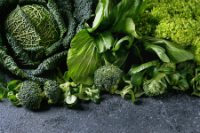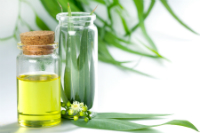NOVEMBER 2017
WHAT’S NEW
RESPIRATORY HEALTH & THE POWER OF THE LUNGS

Acorn squash is a good source of Vitamin C, which supports immunity and works as an antioxidant, helping to protect cells from oxidative stress that can lead to inflammation and health problems such as cancer or heart disease. To maximize the amount of vitamin C you receive from acorn squash, use the vegetable within four days after purchase and cut it right before cooking. Steam or bake the squash instead of boiling it to keep vitamin C from being degraded in hot water.
Acorn squash is also high in both fiber and complex carbohydrates. While there aren’t any simple sugars in acorn squash, if you follow a low-carb diet you’ll want to enjoy smaller portions of this vegetable.
A CLOSER LOOK AT THE LUNGS
PROTECT YOUR LUNGS
EXERCISE. The better your cardiorespiratory fitness, the easier it is for your lungs to keep your heart and muscles supplied with oxygen. It doesn’t matter if you dance under the moon, swim at sunrise, or walk through the woods… just get moving to a level that increases your breathing and heart rate.
PUFF OFF. Smoking is one of the most detrimental things you can do to your lungs. There’s no such thing as moderation. Smoking, second-hand smoke in the air, and smoke absorbed by clothes, furniture and car upholstery can damage lung tissue and increase your risk for lung cancer, emphysema, chronic bronchitis and other respiratory illnesses.
BREATHE CLEAN(ER). From second-hand smoke to industrial pollution, the levels of toxins in the air are astonishing. This is especially true if you live in, work, or travel to places without environmental protections for air quality. For information on local air quality and an explanation of the Air Quality Index (AQI), visit AIRNow. Reduce toxins and improve your air quality by: using air purifiers or whole house air filtration systems; following a schedule for replacing air filters in your heating/cooling system; and keeping plenty of plants in your living areas to remove certain chemicals from indoor air.
BREATHE RIGHT. Most of us don’t breathe well. Too often, respiration is shallow instead of deep, limiting the amount of oxygen taken into the body. Proper breathing begins with good posture – stand tall through the spine and chest. Additionally, practice abdominal breathing, in which you fill the belly – not just the chest – as you inhale.
FOOD FOR THOUGHT. . .
EXPERIENCE THE HEALTH BENEFITS OF ACORN (WINTER) SQUASH

Acorn squash is a good source of Vitamin C, which supports immunity and works as an antioxidant, helping to protect cells from oxidative stress that can lead to inflammation and health problems such as cancer or heart disease. To maximize the amount of vitamin C you receive from acorn squash, use the vegetable within four days after purchase and cut it right before cooking. Steam or bake the squash instead of boiling it to keep vitamin C from being degraded in hot water.
Acorn squash is also high in both fiber and complex carbohydrates. While there aren’t any simple sugars in acorn squash, if you follow a low-carb diet you’ll want to enjoy smaller portions of this vegetable.
It’s easy to include acorn squash in your meal plans. Available in the winter months (hence the name, Winter Squash), it can be baked, sautéed, steamed, stuffed, pureed for soups, or incorporated into a variety of meat and vegetable dishes.
Acorn squash is a good source of Vitamin C, which supports immunity and works as an antioxidant, helping to protect cells from oxidative stress that can lead to inflammation and health problems such as cancer or heart disease. To maximize the amount of vitamin C you receive from acorn squash, use the vegetable within four days after purchase and cut it right before cooking. Steam or bake the squash instead of boiling it to keep vitamin C from being degraded in hot water.
Acorn squash is also high in both fiber and complex carbohydrates. While there aren’t any simple sugars in acorn squash, if you follow a low-carb diet you’ll want to enjoy smaller portions of this vegetable.
RECIPE: ACORN SQUASH SOUP

- 1 large acorn squash
- 1 tbsp olive oil
- 1 tbsp coconut oil
- 1/4 tsp ground cinnamon
- 1/2 tsp kosher salt, or to taste
- 1 medium yellow onion, chopped
- 3 cloves garlic, minced
- 2 cup unsweetened almond milk
- 2 cup vegetable broth
- Optional: Sour cream or plain Greek yogurt for serving
Preheat the oven to 375ºF. Chop the tip and tail off the acorn squash, then cut it in half lengthwise. Scoop out the seeds and discard them (or you can roast them like pumpkin seeds–they’re delicious!).Drizzle the squash flesh with 1 tbsp of olive oil; sprinkle with salt and cinnamon. Place squash halves on a baking sheet, cut-side down. Roast for 45 to 50 minutes, or until the flesh is very soft. Use a spoon to remove the squash flesh from the skin; discard the skin. Heat the 1 tbsp coconut oil in a skillet over medium heat. Add the chopped onion and sauté until browned, about 15 minutes. Add the garlic and sauté an additional 2 minutes. Remove from heat. Add the squash, sautéed onion and garlic, almond milk, and vegetable broth to a blender and blend until completely smooth. Season to taste with salt and pepper and serve with sour cream or plain Greek yogurt, if desired.
Tip: If you have an immersion blender, you can cook the onion and garlic in a Dutch oven, then add the remaining ingredients and blend directly in the pot.
Photo and Recipe Credit: Oh My Veggies
THE MASTER ANTIOXIDANT: GLUTATHIONE

In addition to clearing free radicals, it plays important roles in boosting the work of other antioxidants, nutrient metabolism, the immune response, and the detoxification process that neutralizes drugs, chemicals, metabolic wastes, and other toxins and carcinogens. Because it can regenerate itself, and because it is used by every cell and tissue in the body, glutathione is considered “the Master Antioxidant.”
For general health, the best approach is to enhance the body’s levels of nutrients needed for boosting glutathione levels through a whole foods diet. This includes broccoli, cabbage, Brussels sprouts, kale, garlic, and onions as well as walnuts and avocado. Eating foods rich in B vitamins and selenium also supports the body’s natural glutathione levels. This includes beets, garbanzo beans, spinach, and lentils for the B vitamins; and for selenium include foods such as wild-caught yellow-fin tuna, halibut, grass fed and grass finished organic boneless turkey and beef.
Aside from food, the fastest and best possible way to increase glutathione levels in the body is through an IV (intravenous) infusion. Check out the Indigo IV Lounge Menu.
In order to gain the best benefit from an oral glutathione supplement there are two important things to consider: the form and co-factors (helpers). The best forms are L-glutathione, acetyl glutathione and liposomal glutathione. In addition, glutathione works better when it is paired with other substances that help the body absorb and use it, i.e. co-factors. These include N acetyl-L-cysteine (NAC), B vitamins, selenium, magnesium, alpha lipoic acid (ALA) and vitamin C. For serious respiratory illnesses, glutathione might provide its best medicinal effects when it is inhaled. Deciding on the appropriate dose and whether to use oral or inhaled glutathione to gain the most benefit can be challenging so consider working with a healthcare practitioner to determine what is best for you.
Every human being can benefit from glutathione, read more here. When you combine glutathione with vitamin C, you get a powerhouse, here’s why.
EASE RESPIRATORY SYMPTOMS WITH EUCALYPTUS OIL (Eucalyptus globulus)

As an aromatherapy remedy for respiratory symptoms, you can buy eucalyptus prepared as a tea, chest rub, or vaporizer. You can also purchase organic Eucalyptus EO for use in bath water, to add to a vaporizer, or a room diffuser. The oil distributes in the steam, which helps open the nasal and respiratory pathways as you inhale. In a bath, add 1 tbsp of milk (almond, cashew or rice) with the oil to enhance dispersal of the oil.
Before preparing a home remedy, consult with a holistic physician about the proper dilution of the oil as it can interact with other medication, create an allergic reaction for some people, and requires different preparation for children than for adults.
EASE CHEST CONGESTION WITH MUSTARD PACK

HOW TO PREPARE A MUSTARD PACK
INGREDIENTS
1 tbsp Mustard Seed Powder
4 tbsp gluten free flour
A drizzle of Olive or coconut oil
Cotton Cloth (muslin cloth)
Warm, wet wash cloth
DIRECTIONS
Make sure the mustard seed is finely ground. If yours is lumpy, place in a mortar and pestle and grind until fine.
Add flour to the mustard powder and drizzle in a little water to make a paste. The paste should not be thick or watery.*
Sterilize the cloth by boiling it in water. Squeeze out excess water and place on a clean cutting board.
Spread a thin layer of the mustard paste on the cloth.
Apply a thick coat of the oil and then place the mustard pack on the chest. Cover with a warm wet cloth.
Leave in place for 15 minutes, then remove the pack and wash the area with warm water. Make sure to wash your hands thoroughly and not touch your eyes or sensitive areas.
*See images of preparation at Wild Turmeric
RESPIRATORY HEALTH & THE POWER OF THE LUNGS
- American Lung Association (numerous pages within the site)
- Healthline.com. “Breathe deeply to improve Health and Posture.” Accessed 19 Sept 2017.
- The respiratory system. (2012).
- Iowaclinic.com: “Posture, Breathing and Lung Capacity.” Accessed 19 Sept 2017.
- Wolverton, B.C., et al (NASA) “A study of interior landscape plants for indoor air pollution abatement.”Accessed 2 Oct 2017.
EXPERIENCE THE HEALTH BENEFITS OF ACORN (WINTER) SQUASH
- WorldsHealthiestFoods.com, “Winter Squash.” Accessed 16 September 2017.
- Shibata, A. et al. “Intake of Vegetables, Fruits, Beta-Carotene, Vitamin C and Vitamin Supplements and Cancer Incidence among the Elderly: A Prospective Study.” British Journal of Cancer 66.4 (1992): 673–679. Accessed 16 September 2017.
- Food.com. “Kitchen Dictionary: Acorn Squash.” Accessed 15 September 2017.
- USDA National Nutrient Database for Standard Reference: Nutrient Data for 11483, Squash, Winter, Acorn, Cooked, Baked, Without Salt. Accessed 16 September 2017.
- HarvestoftheMonth.com, “Harvest of the Month: Winter Squash.” Accessed 16 September 2017.
THE MASTER ANTIOXIDANT: GLUTATHIONE
- Wu, G., Fang, Y., et al., “Glutathione Metabolism and Its Implications for Health.” Jn of Nutrition (2004) Accessed 18 Sept 2017.
- Medscape.com. Prousky, “The Treatment of Pulmonary Diseases and Respiratory-Related Conditions With Inhaled (Nebulized or Aerosolized) Glutathione.” Evid Based Complement Alternat Med. (2008) 5(1):27-35 Accessed 18 Sept 2017.
- Flagg EW1, et al. Dietary glutathione intake in humans and the relationship between intake and plasma total glutathione level. Nutr Cancer. (1994) Accessed 18 Sept 2017.
- Genetics Home Reference: “Glutathione synthetase deficiency.” (posted 9/12/2017) Accessed 18 Sept 2017.
- Kovacs-Nolan, Jennifer, Prithy Rupa, Toshiro Matsui, Mitsuru Tanaka, Toru Konishi, Yusuke Sauchi, Kenji Sato, Shin Ono, and Yoshinori Mine. 2014. “In Vitro and ex Vivo Uptake of Glutathione (GSH) across the Intestinal Epithelium and Fate of Oral GSH after in Vivo Supplementation.” Journal of Agricultural and Food Chemistry. 62 (39): 9499-9506.
- Richie, John P., Sailendra Nichenametla, Wanda Neidig, Ana Calcagnotto, Jeremy S. Haley, Todd D. Schell, and Joshua E. Muscat. 2015. “Randomized controlled trial of oral glutathione supplementation on body stores of glutathione.” European Journal of Nutrition. 54 (2): 251-263.
EASE RESPIRATORY SYMPTOMS WITH EUCALYPTUS OIL
- Johnson, R.L., S. Foster, Low Dog, T. and Kiefer, D. “Eucalyptus.” National Geographic Guide to Medicinal Herbs: The World’s Most Effective Healing Plants. (2012) 75-77. Washington, D.C.: National Geographic.
- Kehrl, W. Sonnemann, U., Dethlefsen, U., “Therapy for Acute nonpurulent Rhinosinusitis with Cineole: Results of a double-blind, randomized, placebo-controlled trial.” Layrngoscope (April 2004). DOI: 10.1097/00005537-200404000-00027. Available.
- Nordqvist, Joseph. “Eucalyptus: What are the health benefits?” Medical News Today. MediLexicon, Intl., 17 Feb. 2017. Accessed: 19 Sep. 2017.
- Salari, M.H., Shirazi, A.G., Hafezi, R., & Mohammedypour, M. “Antibacterial effects of Eucalyptus globulus leaf extract on pathogenic bacteria isolated from specimens of patients with respiratory tract disorders [abstract].” Clinical Microbiology & Infection. (2006, February) Accessed September 2017.
- Serafino, A., Sinebaldi Vallebona, P., Andreola, F., Zonfrillo, M., Mercuri, L., Federici, M., &… Pierimarchi, P. “Stimulatory effect of Eucalyptus essential oil on innate cell-mediated immune response. BMC Immunology.” (2008, April 18). Accessed 19 September 2017.
EASE CHEST CONGESTION WITH MUSTARD PACK
- “Mustard Poultices in the Treatment of Acute Bronchitis,” in The Medical Summary: A Monthly Journal of Practical Medicine, New Preparations, Volume 35. (1914) p.117. Accessed via Google Books 9/19/2017.
GUIDING PRINCIPLES

First Do not Harm

Identify and Treat the cause

Healing Power of Nature

Doctor as Teachers

Treat the Whole

Prevention is best Medicine
Follow us on instagram
BLOG
Become an educated consumer with our Indigo Blogs and prevent dis-ease.
Our Doctors have been featured in:









